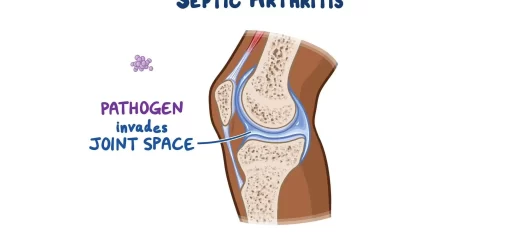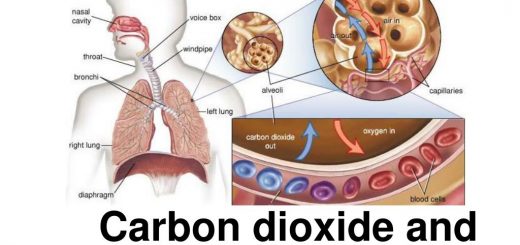Types of joints of upper limb, Ligaments and movements of the shoulder joint
The upper extremities or upper limbs are the forelimbs of the upright-postured tetrapod vertebrate, upper limbs extend from the scapulae and clavicles down to and including the digits, including all the musculatures and ligaments involved with the shoulder, elbow, wrist, and knuckle joints. In humans, each upper limb is divided into the arm, forearm, and hand, and it is used for climbing, lifting, and manipulating objects.
Joints of upper limb
The arm extends from the shoulder to the elbow, explicitly excluding the forearm, and thus “upper limb” and “arm” are not synonymous. The joints of the free upper limb (articulations of the upper extremity except for the shoulder girdle) are Shoulder, Elbow, Radioulnar, Wrist, Intercarpal, Carpometacarpal, Intermetacarpal, Metacarpophalangeal, and Articulations of the Digits.
Sternoclavicular Joint
- Type: Synovial double-plane joint.
- Articulation: This occurs between the sternal end of the clavicle, the manubrium sterni, and the first costal cartilage.
- Capsule: This surrounds the joint and is attached to the margins of the articular surfaces.
- Ligaments: The capsule is reinforced in front of and behind the joint by the strong sternoclavicular ligaments.
- Articular disc: This flat fibrocartilaginous disc lies within the joint and divides the joint’s interior into two compartments.
- Accessory ligament: The costoclavicular ligament is a strong ligament that runs from the junction of the first rib with the first costal cartilage to the inferior surface of the sternal end of the clavicle.
Acromioclavicular Joint
- Type: Synovial plane joint.
- Articulation: This occurs between the acromion of the scapula and the lateral end of the clavicle.
- Capsule: This surrounds the joint and is attached to the margins of the articular surfaces.
- Ligaments: Superior and inferior acromioclavicular ligaments reinforce the capsule.
- Accessory ligament: The very strong coracoclavicular ligament extends from the coracoid process to the undersurface of the clavicle. It is largely responsible for suspending the weight of the scapula and the upper limb from the clavicle. This ligament is formed of two parts: the conoid part and the trapezoid part.
Shoulder Joint
- Type of joint: Synovial. Polyaxial. Ball and socket.
- Articular surface:
- Head of the humerus.
- The glenoid cavity of the scapula.
Each of the articular surfaces is covered by hyaline cartilage. The glenoid cavity is deepened by a fibro-cartilaginous rim; Labrum glenoidale.
Capsule
- The capsule is attached to the margins of the glenoid cavity outside the labrum glenoidale.
- Laterally the capsule is attached to the anatomical neck of the humerus, except inferiorly where it extends about 1 cm to the shaft.
The supraglenoid tubercle is inside the capsule so the tendon of the long head of the biceps is an intra-capsular extra-synovial structure.
Synovial membrane
It lines all the structures inside the capsule of the shoulder joint except the articular cartilage. It forms a tubular sheath around the tendon of the long head of the biceps so it is an intra-capsular extra-synovial structure.
Ligaments related to shoulder joint
- False ligaments: They are the thickening of the capsule of the shoulder joint (3 glenohumeral ligaments).
- True ligaments:
- Coraco-humeral ligamint.
- Transverse humeral ligament (bridges over the bicipital groove).
Movements of the shoulder joint
Flexion: This movement is done by the clavicular head of the pectoralis major, anterior fibers of the deltoid, and the coracobrachialis.
Extension: This movement is done by the posterior fibers of the deltoid and teres major.
Adduction: This movement is done by the pectoralis major, teres major, and latissimusdorsi.
Abduction: This movement is done by the supraspinatus and deltoid.
Medial rotation: This movement is done by the pectoralis major, teres major, latissimus dorsi, subscapularis, and anterior fibers of the deltoid.
Lateral rotation: This movement is done by the infraspinatus, teres major, and posterior fibers of the deltoid.
Circumduction: A movement of abduction, extension, adduction, and flexion in succession.
Factors share in the stability of shoulder joint
The stability of any joint is an action of 3 factors:
- Bony factor.
- Ligamentous factor.
- Muscular factor.
Bony factor
- The shallow glenoid cavity opposite to a relatively larger head is a negative factor for the instability of this joint. However, the labrum glenoidale deepens the shallow glenoid cavity so it helps in the stability of the joint.
- Coraco-acromial arch: It acts as a second socket for the head of the humerus and prevents its upward dislocation.
Ligamentous factor
- Labrum glenoidale.
- Coraco-acromial ligament as it bridges over the bony arch.
Muscular factor
– It is the main factor aiding to the stability of the joint.
- Rotator cuff of muscles (they are the 4 muscles that are firmly adherent to the capsule of the shoulder joint; subscapularis, supraspinatus, infraspinatus, and teres minor.
- Splinting effect of long heads of biceps and triceps muscles.
- The long head of the biceps prevents upwards dislocation of the joint.
Nerves of forearm and hand, Nerve injuries types and causes
Forearm bones, anatomy, function & Skeleton of the hand
Flexors of forearm, Forearm muscles, structure, function & anatomy
Blood vessels of forearm & hand, Veins and Lymphatics of the upper limb




Many thanks!
You are welcome